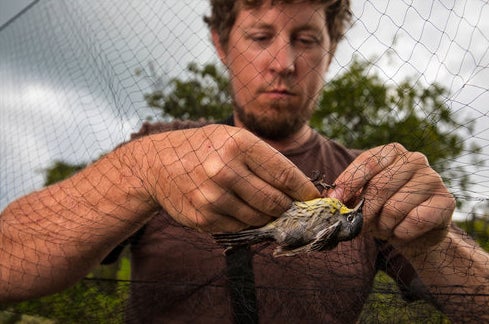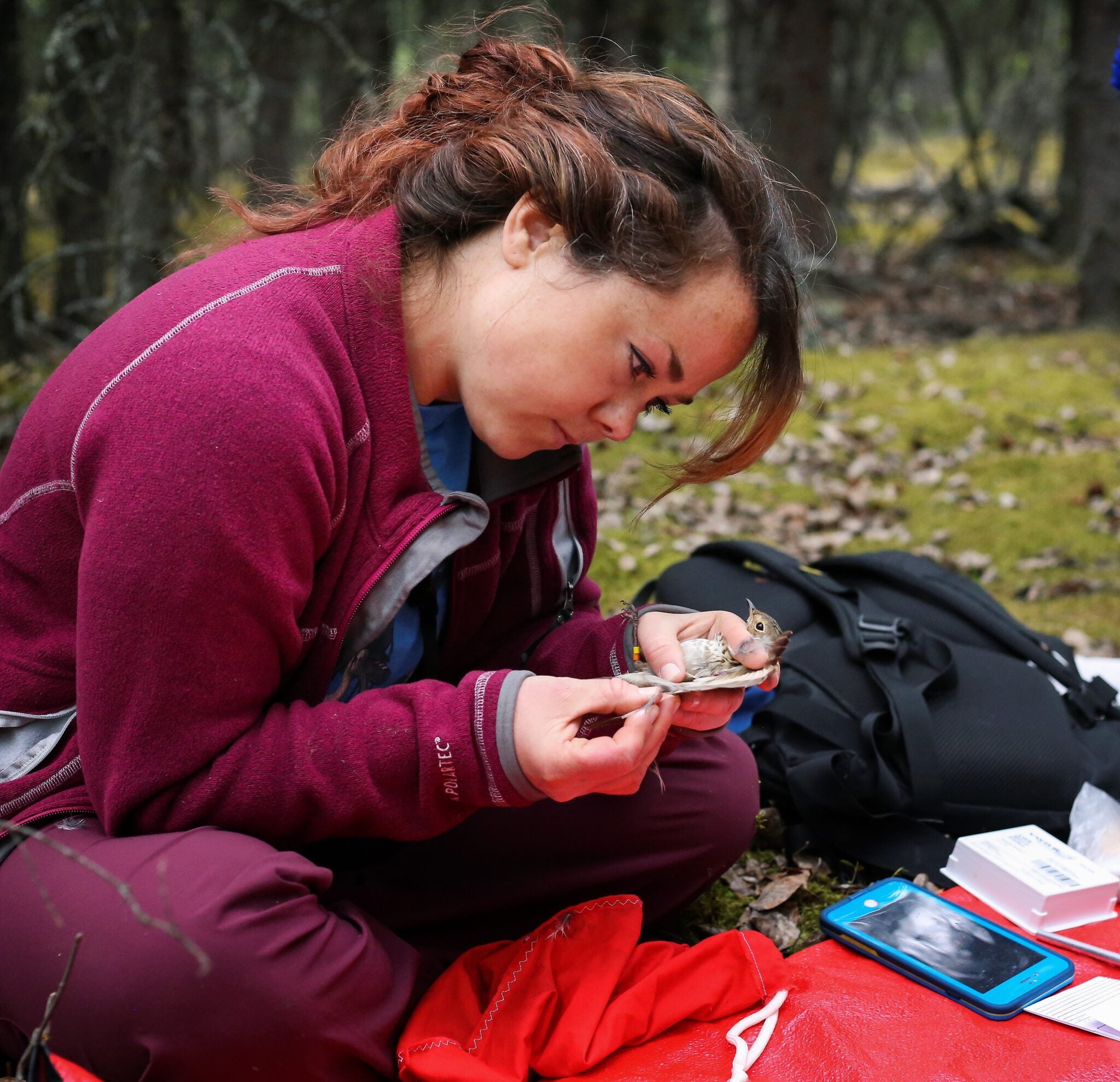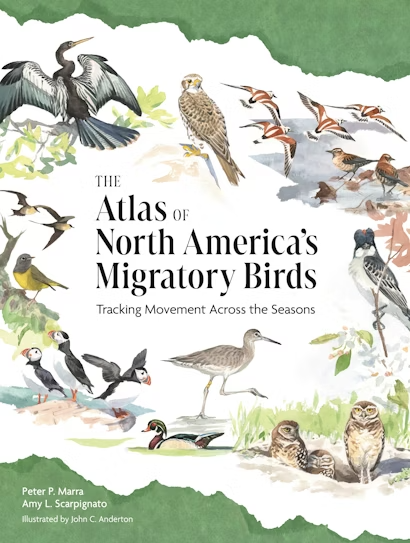Marra Lab
Led by Earth Commons’ Dean Peter Marra, the Marra Lab research uses birds to help us define and understand broad environmental issues, tackling contemporary conservation challenges by addressing fundamental knowledge gaps at the intersection of ornithology, ecology and conservation biology, with an emphasis on tracking birds throughout their whole lifecycles.
What we study
Ornithology & Ecology
Studying bird populations, behaviors, and interactions with changing environments across their full annual cycle
Spatial Ecology & Migration Science
Using geolocation, telemetry, and mapping to reveal migratory connectivity and movement patterns across hemispheres
Conservation Biology & Environmental Science
Identifying factors in species declines and evaluating science-based strategies for recovery and management.
Impact areas
Partners & Projects
Road to Recovery
A bird population recovery initiative dedicated to restoring rapidly declining bird species by bringing biological and social scientists, land managers, governments, conservation organizations, and communities together to pinpoint the causes of decline and co-produce conservation strategies
The Atlas of North American Migratory Birds
Tracking Movement Across the Seasons. A state-of-the-art migratory atlas of North American birds—the first resource of its kind from Peter P. Marra and Amy L. Scarpignato
Lab Members
Laudato Si’ Professor, Biology and the Environment; Professor, McCourt School of Public Policy
Postdoctoral Associate
Doctoral Student
Former Lab Members
Grad Students
- Terri Rafiq (M.S. University of Pennsylvania),
- Bill Deluca (M.S. George Mason University) – now at National Audubon Society,
- Ryan Norris (Ph.D. Queen’s University) – now at Guelph University;
- Javier Salgado Ortiz (Ph.D. Queen’s University) – now at University of Michoacan
- Pauline Roberts (Ph.D. – Dartmouth College),
- Mike Newhouse (M.S. Towson University)
- Karin Roux (M.S. George Mason University),
- Barbara Schmeling (M.S. Frostburg State University),
- Colin Studds (Ph.D. University of Maryland) – now at University of Maryland, Baltimore County
- Matt Reudink (Ph.D. Queen’s University), – now at Thompson Rivers University
- Nora Diggs (M.S. University of Georgia),
- Joe Smith (Ph.D. George Mason University), USFWS
- Katie Langin (M.S. Queen’s University), – Science Magazine
- Ryan Peters (M.S. George Mason University);
- Christina Kennedy (Ph.D. University of Maryland); The Nature Conservancy
- Anne Balogh (M.S. Towson University), Columbus Audubon
- Sarah Rockwell (Ph.D. University of Maryland), Klamath Bird Observatory
- Ann McKellar (Ph.D. Queen’s University), now at Canadian Wildlife Service
- Herlitz Davis (Ph.D. George Mason University), Northern Virginia Community College
- Christopher Tonra (Ph.D., University of Maine), now at Ohio State University
- Clark Rushing (Ph.D. University of Maryland), now at University of Georgia
- Michael Hallworth (Ph.D. George Mason University), now at Vermont Center for Ecosystem Studies
- Nathan Cooper (Ph.D., Tulane University), now at Smithsonian Migratory Bird Center
- Ashley Peele (Ph.D., Tulane University),
- Brian Evans (Ph.D., University of North Carolina), now at Smithsonian Migratory Bird Center
- Kevin Bennett (M.S., Rutgers University),
- Desiree Narango (University of Delaware), now at Vermont Center for Ecosystem Studies
- Alicia Brunner (M.S., Ohio State University), now at National Audubon Socity
- Calandra Stanley (Ph.D., University of Maryland), now at Louisiana State University
- Bryant Dossman (Ph.D., Cornell University),
- Henry Stevens (Georgetown University).
Postdoctoral Fellows
- Jeff Hostetler, USGS
- Colin Studds, University of Maryland, Baltimore County
- Chris Tonra, University of Georgia
- Isabelle Bisson,
- Shannon LaDeau, Cary INstitute
- Frederick Angelier, – French National Centre for Scientific Research
- Scott Wilson, Canadian Wildlife Service
- Amy Wilson,
- T. Brandt Ryder, Bird Conservancy of the Rockies
- Scott Loss, Oklahoma State University
- Clark Rushing, University of Georgia
- Tammy Wilbert, USFWS
- Luke Powell, Biopolis, Portugal
- Dana Mosely – James Madison University
- Emily Cohen – University of Maryland, Appalachian Lab
- Michael Hallworth – Vermont Center for Ecosystem Studies
- Dara Satterfield, USFWS
- Alex Jahn, Oregon State University
- Brian Evans, Smithsonian Migratory Bird Center
- Ruth Bennett, Smithsonian Migratory Bird Center
- Evan Buechley, Peregrine Fund
- Nathan Cooper – Smithsonian Migratory Bird Center
- Calandra Stanley – Louisiana State University










